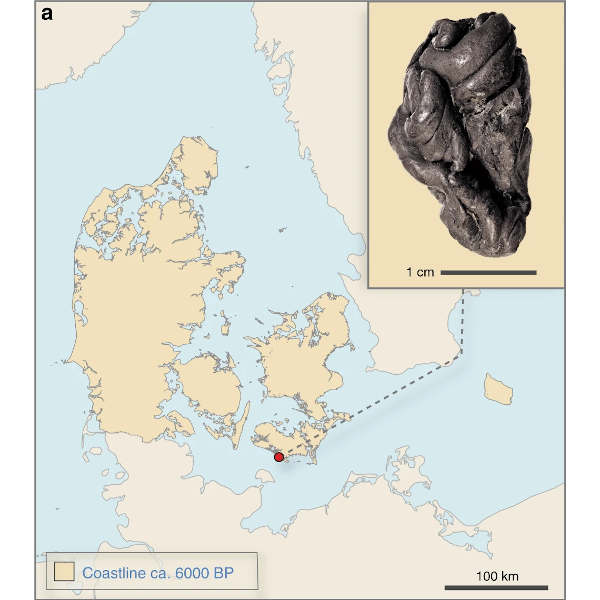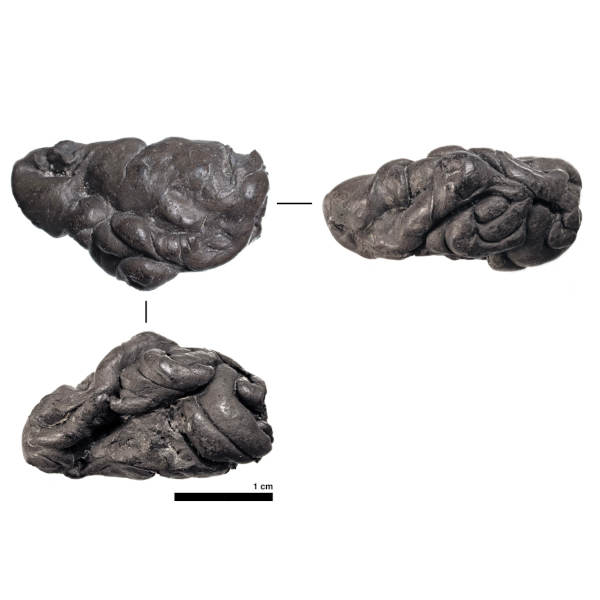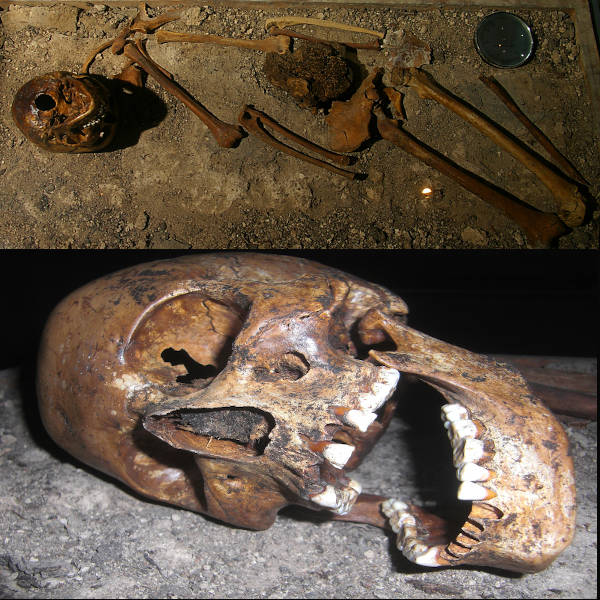DNA spotlight
Syltholm - Stone Age chewing gum

Denmark's glacial period lasted until 13,000 years ago allowing humans to move back into land previoulsy covered by ice and establish permanent habitation. The landscape turned from tundra to light forest and various plants appeared. The first inhabitants of this post-glaical landscape hunted reindeer and other land mammals as well as gathered fruit. By 8300 BC the temperature reached 15 degrees in the summer and aurochs and elk arrived from the south. The oldest known bog body (a human mummified in peat bog) was found here in 8000 BC. By 4500 BC, Denmark became a series of islands and the inhabitatns shifted to a seafood based diet which enabled the population to increase. The fourth largest island, Lolland, was the site of a settlement from 3700 BC.

Excavations at Syltholm on Lolland island revealed a 5700 year old piece of chewed birch pitch which was found preserved by the bog. In neolithic times this area would have been a shallow brackish lagoon protected from the open sea to the south by shifting sandy barrier islands. Palaeolithic people used birch pitch as glue up to 760,000 years ago and it was derived by heating the bark of birch trees. It was thought birch pitch was chewed for medicinal and antiseptic properties like an ancient chewing gum, and the piece found had been imprinted with human teeth marks. A neolithic female's DNA was extracted from the birch pitch revealing surprising information.

Chewed birch pitch is an excellent source of ancient human DNA as DNA gets trapped in the pitch where it is preserved due to its aseptic and hydrophic properties. It was revealed Lola, as this individual was nicknamed, had dark hair, dark skin and blue eyes. This was typical of early european hunter gatherers. It was also discovered that Lola had similiar traits to Neolithic individuals found in Spain, and that collectively they most closely genetically relate to people in Sweden and Finland. These early hunters would subsist mostly on protein and Lola, like her Spanish cousin, was lactose intolerant and unable to digest starch. Her mtDNA haplogroup is K1e which is more commonly associated with early farming communities.

While there are no actual remains of Lola, the birch pitch remained very well preserved in the mud of the bog. Many preserved skeletons and even bodies complete with skin have been found in Denmark and nearby Sweden. One such bog body is the Luttra Woman (shown above) from the same time period in Sweden. The oxygen-poor conditions in these bogs means skin, hair, clothes and even stomach contents can be preserved. The Luttra Woman's stomach for example was full of rasberry seeds when she died at the age of 20-25 years. The Tollund man, another famous bog body, still has his skin preserved complete with facial features and a 3-day beard.
Syltholm Neolithic Denmark
- Sample ID: Syltholm_1
- Year: 3750 BC
- Sex: Female
- Location: 54.6519,11.3717



